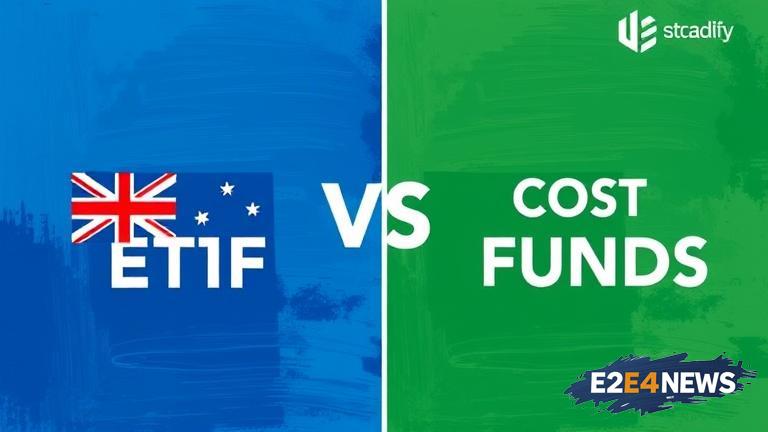The Australian exchange-traded fund (ETF) market has experienced significant growth in recent years, with a wide range of products available to investors. One of the key trends in the market is the increasing competition between high-cost and low-cost ETFs. On one hand, high-cost ETFs offer a range of benefits, including active management, research-driven investment strategies, and access to niche markets. These funds are often managed by experienced investment professionals who use their expertise to select securities and make investment decisions. However, high-cost ETFs come with higher fees, which can eat into investors’ returns over time. On the other hand, low-cost ETFs offer a low-cost alternative, with fees significantly lower than their high-cost counterparts. These funds typically track a market index, such as the S&P/ASX 200, and offer broad diversification and transparency. Low-cost ETFs have become increasingly popular in recent years, as investors seek to minimize their costs and maximize their returns. Despite the popularity of low-cost ETFs, high-cost ETFs still have a place in the market, particularly for investors who are seeking specific investment outcomes or who require more complex investment strategies. The battle between high-cost and low-cost ETFs is intense, with fund managers competing aggressively for market share. This competition is benefiting investors, who are seeing lower fees and better investment outcomes as a result. The Australian Securities and Investments Commission (ASIC) has also played a role in promoting competition in the ETF market, by introducing regulations that require fund managers to be more transparent about their fees and investment strategies. As the ETF market continues to evolve, it is likely that we will see even more innovation and competition, with new products and services being launched to meet the changing needs of investors. The rise of robo-advice and digital investment platforms has also disrupted the traditional fund management model, with many investors now seeking low-cost, automated investment solutions. In response, traditional fund managers are having to adapt and innovate, by offering more competitive pricing and more sophisticated investment strategies. The ETF price war is also having a significant impact on the broader financial services industry, with many banks and financial institutions reviewing their business models and strategies in response to the changing market. As investors become more sophisticated and demanding, fund managers will need to be more responsive to their needs, by offering more competitive pricing, better investment outcomes, and more innovative products and services. The future of the ETF market looks bright, with many opportunities for growth and innovation. However, fund managers will need to be agile and adaptable, in order to remain competitive in a rapidly changing market. The Australian ETF market is expected to continue to grow, driven by increasing demand from investors and the introduction of new products and services. As the market evolves, it is likely that we will see even more competition between high-cost and low-cost ETFs, with investors benefiting from the innovation and price competition that results. In conclusion, the battle between high-cost and low-cost ETFs is a key trend in the Australian ETF market, with significant implications for investors and fund managers. As the market continues to evolve, it is likely that we will see even more innovation and competition, with new products and services being launched to meet the changing needs of investors.





